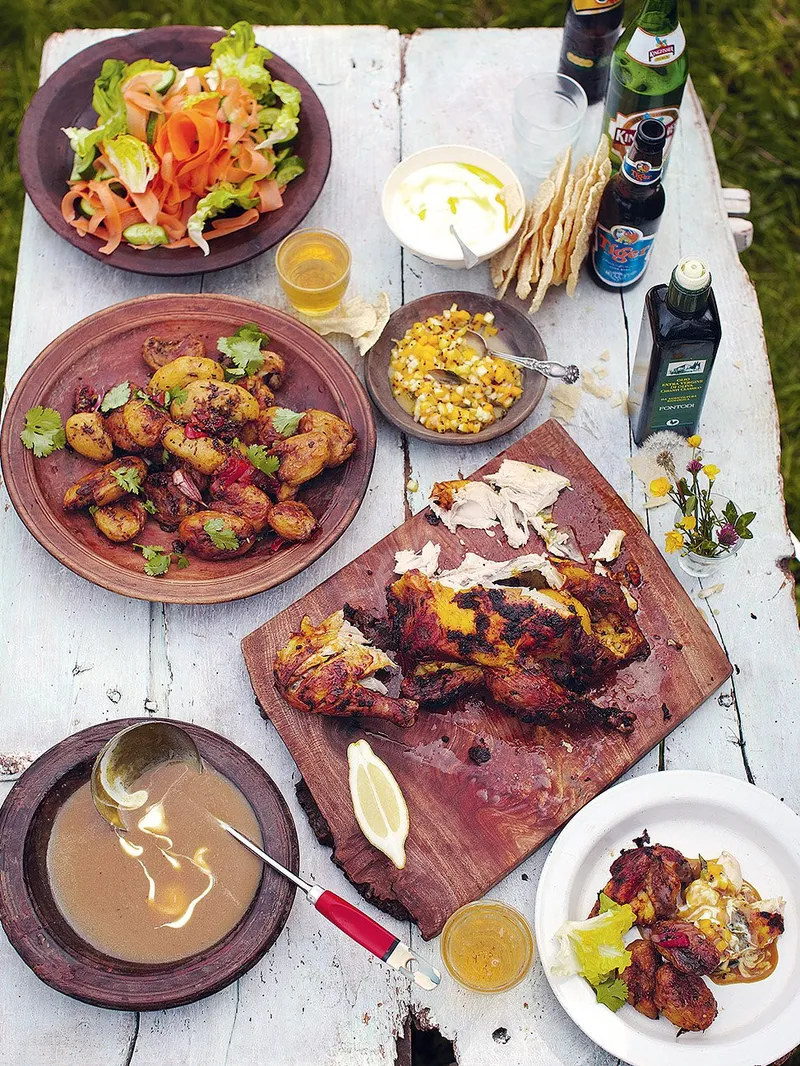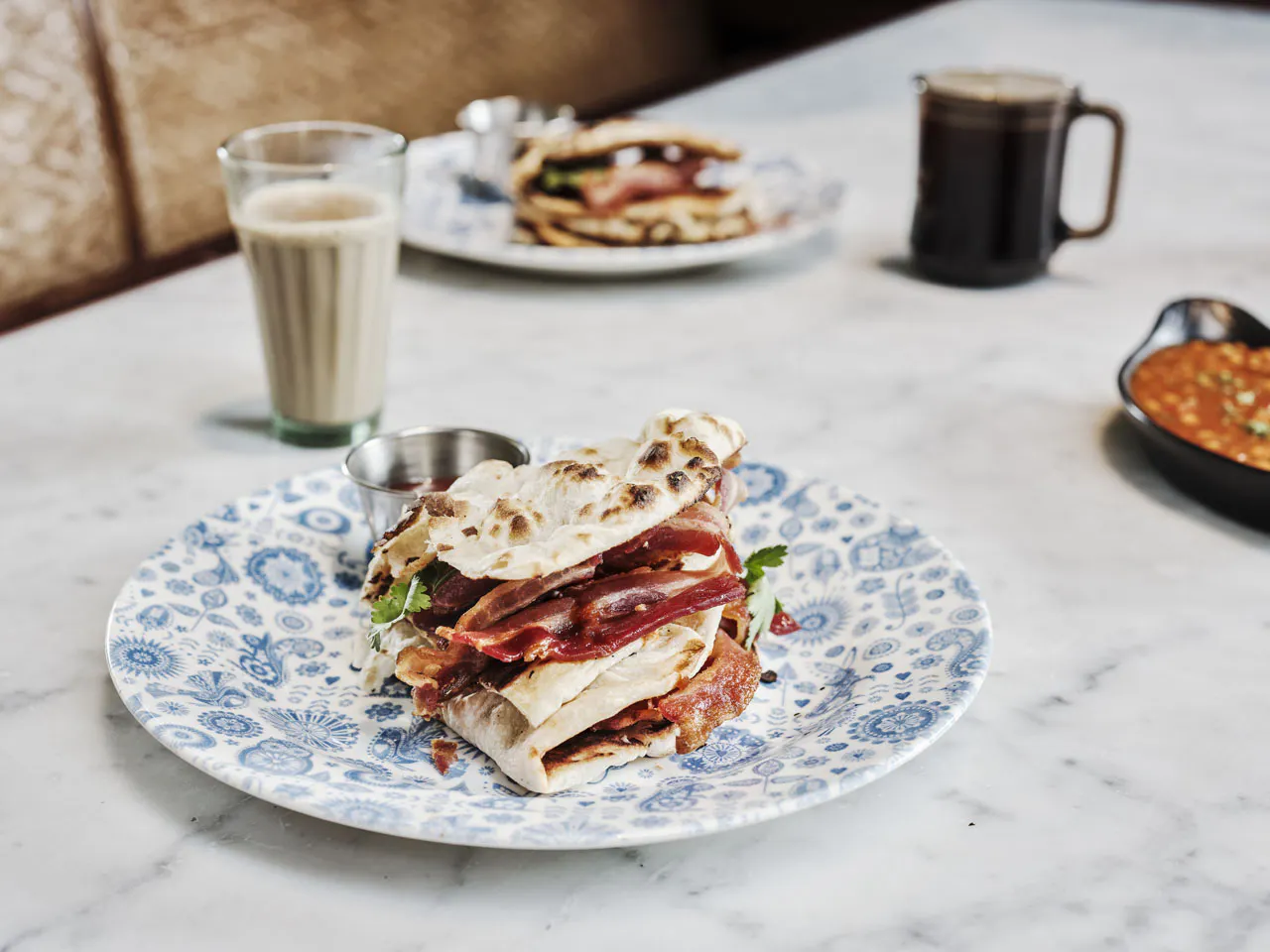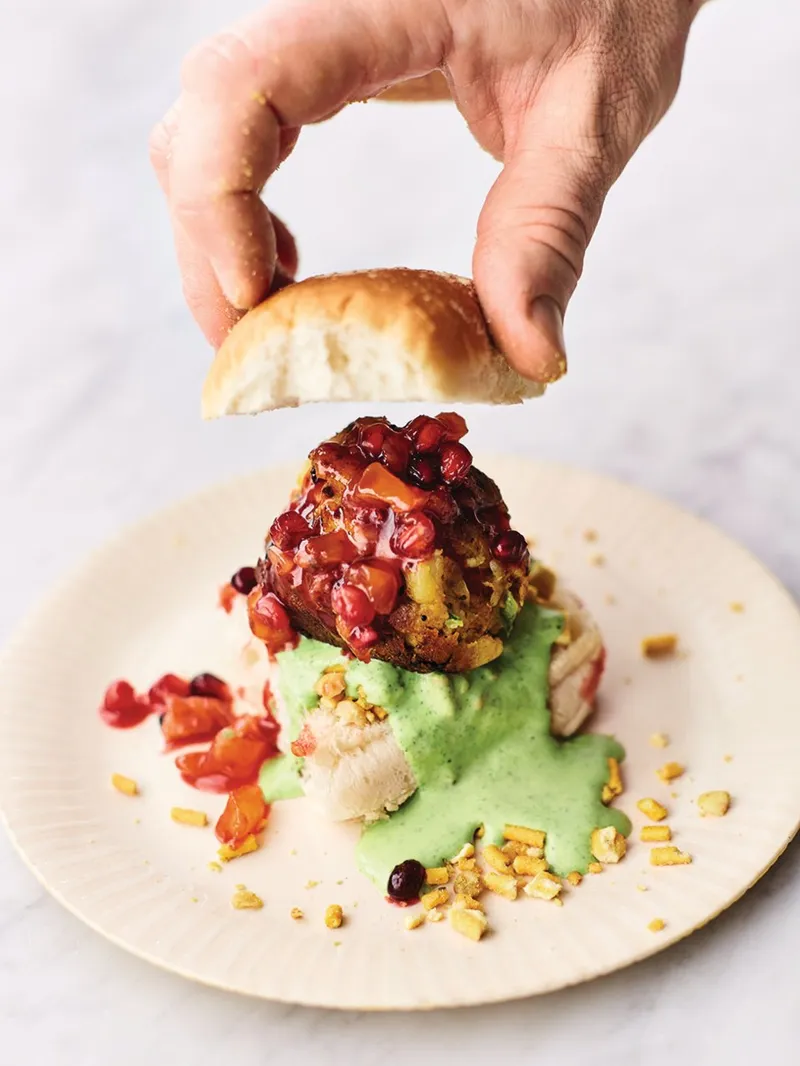Desi or dépaysé - inventing comfort food
- rosemary
- Apr 25, 2024
- 7 min read
"Being the child of an immigrant has its own issues because your identity is so torn." Afreena Islam

"Desi: a person of birth or descent from the Indian subcontinent who lives abroad; (adjective) - local, indigenous
Dépaysé: situated in unfamiliar surroundings : being out of one's element; displaced, astray.
Diaspora: the dispersion or spread of a people from their original homeland."
I felt proud of myself yesterday - I went to our nearby shopping mall and did not buy a cookbook. Possibly because I have bought a few of late, so time to present them to you - gradually. And this is the first - Desi Kitchen
I actually did not physically purchase it from a bookshop although I had tried to. But it was not available here - well not easily, so I ordered it online from the evil Amazon, who of course delivered it in no time at all from somewhere on the other side of the world. Anyway I had read about it somewhere - probably in one of The Guardian newsletters and got the impression that it was a book full of all the wonderful things that the Indian diaspora has done to their food since living in England - chicken tikka masala, Birmingham balti - all of that kind of thing. However, I think I slightly misunderstood the general drift of the book. Which is not, of course, a criticism necessarily, just a question of misjudged expectations, to which one needs to adjust.

It's written by this rather beautiful looking young woman called Sarah Woods - a daughter of Indian immigrants from the Punjab who settled in the West Midlands of Great Britain. Sarah is not an immigrant herself - she is British:
"For me, Britain is my motherland, the country of my birth, and as such the food narrative starts with modern Britain as the source of origin."
Which in terms of this book is not really what you get. Overwhelmingly the starting point is Indian food - specific regional dishes, that are then presented - sometimes with a British twist, sometimes in their original form - most likely as cooked by her Indian mother and grandmother - the influences of her youth. More often, however, they are her own recipes, based on a mix of the two cultures. For even her mother and grandmother were already influenced by their new home:
"I remember yoghurt being cultured near the fireplace, and they always cooked from scratch; we had traditions like chips and gravy every Friday, and 'desi' fruit crumbles, and bread and butter pudding with lashings of Bird's custard were often on for dinner. Grandad even built a tandoor in the garden."
A corporate career came to an end when she became a finalist on a British TV show - Britain's Best Home Cook, which prompted her to train as a chef, and then to create supper clubs - and during COVID lockdowns a 'desi' takeaway service. Now she has restaurant pop-ups and takeaway but is gradually working towards one day having her own restaurant. She also has a website - My Home Cooked, on which there are a few recipes - but as far as I can see - 'authentic' Indian recipes. In the meantime she has produced this, on reflection, rather wonderful cookbook. Although I don't think it is a quick and easy kind of book on the whole.
In her piece "About Me' she describes her aims thus:
"I've come across many a cookbook with its recipes rooted in a country on the other side of the world. I feel we need to focus on the here and now, the very exciting evolution of the British food scene based on the rich diversity that immigration has brought. ... I look forward to lifting the veil on other communities, from the island of Sri Lanka all the way up to Kashmir, in the foothills of the Himalayas. Indian food is not one homogenous food type, but hyper-regional and nuanced. The second-generation desi layer removes the geographical borders, and this same cross-over forms part of our identity."
Before I get on to that crossover in food I'd just like to ponder briefly on the notion of those three words at the top of the page - 'desi', 'dépaysé' and diaspora.

'Desi' is a term specific to a particular group - Indian immigrants around the world. Which, now that I think about it is a term you really could apply to Madhur Jaffrey's book The Ultimate Curry Bible as it contains recipes from Indian communities all over the world - as well as from regional India. And like the Jews and the Italians, the Chinese - and yes, the British, in particular, the Indians have spread themselves all over the world - to everybody's mutual benefit. Initially the contact may be fraught with difficulties and injustice, but eventually I think, the bad aspects of each tend to be discarded in favour of the good, and new mergers of everything from language and religion, to fashion and food evolve.
'Dépaysé' which literally means 'uncountried' is one of my favourite French words, because in a personal sense it describes perfectly my own sense of being neither of one nation or another. A stranger in both Britain and Australia but only in the sense of no longer feeling completely British, nor yet completely Australian. For me this is not necessarily a bad thing because for one thing I think it enables one to look dispassionately at the national characteristics of both. Which is really good thing. Nationalism, in my eyes, along with religion is one of the big evils of the world. For my two sons - second generation in the terms that Sarah Woods describes, I think they would both describe themselves as Australian - no loyalty to Britain there.
'Diaspora' has somewhat negative connotations I feel, as it tends to refer to entire peoples who have left their homeland, mostly in one particular era, because of some major problem in their homeland - war, persecution, poverty. And as they are such large groups there is a tendency, at least initially, to cling to each other and to their culture rather than adapting to the new. Their traditional foods are one of the main things providing comfort in those first decades, maybe even centuries, of acclimatisation to their new home.
Time, of course, takes care of all the differences and creates new, transformed, multicultural nations - mostly the colonial powers of every era - there is always one - from Rome, to the 'western' democracies of the world today. And food always plays a huge part in making that transition from one culture to another.

Enough. Back to food. With respect to 'fusion' and the merging of two cuisines, Sarah Woods actually goes further than a simple merger of India and Britain. As I said it is not a collection of recipes from here and there - other people's stuff - it's an exploration of some regional Indian groups of people and the region of Britain in which they are clustered - Goans in Swindon, Bengalis in Cardiff, Nepalis in Kent and South-East England for example. Each chapter with its rather glorious title page in the spirit of the cover of the book, like this one for the Punjabis, begins with a profile of a member of that community and then explores that particular regional Indian cuisine. There are recipes for some of those dishes - more or less 'authentic' I am guessing, but there are also recipes from Sarah Wood herself as she has put her own twist to one or two. Sometimes that twist may even include a completely different culture who perhaps live nearby - Yemen, Uganda, China, the Caribbean ... Sometimes the inspiration is British, sometimes Indian, sometimes something completely different. Alas none of the recipes I am about to mention are online, and not every recipe in the book has a picture either. Which I think is sometimes a problem. I would love to know what her Indian take on a Birmingham club sandwich looks like for example. I guess Penguin didn't want to spend the money on a picture for every recipe, and maybe that's good thing too. It might make us use our imagination more, and also might help us when our effort doesn't look like the picture in the book.
In her chapter on the Punjab, for example, there are classic recipes for various breads, and chutneys. There are classic British puddings - she does not like Indian ones - such as Cornflake tart and chocolate birthday cakes. Then there is an Indian riff on the British Sunday roast which in many ways is similar to Jamie Oliver's Empire/Spicy roast chicken, bombay roasties, amazing indian gravy which has a YouTube video as well as the recipe. Jamie's version is on the right. Here the adaptation is to a tradition more than an actual dish and since it appears in two different places, maybe this is indeed the way that British roast chicken is going.
Other 'fusion' dishes in this chapter are Chippy scallops with a twist - not scallops the shellfish - but the battered sliced potatoes that you get in fish and chip shops in England. Sarah Woods' have a very Indian kind of batter though and look perfectly scrumptious. There are four ways with Keema - minced lamb - which include a Keema filo pie, Keema con carne, Keema burritos and Keema tacos. Elsewhere in the book I found a further use of Keema in Neeps and Tatties Keema pie which is a mix of the Scottish swede and potato mash and the English Shepherd's pie; Butter chicken bao buns - an English version of an Indian dish, mixed with Chinese bao buns; plus a Welsh chilli rarebit.

One last mild criticism of the book is that most of the recipes are fairly daunting looking in that there are long lists of ingredients and long instructions. However, it's too early to say this means it's all too difficult or a faff. Indian dishes tend to have long lists of spices in the ingredient list, but this generally doesn't actually entail much more than mixing them all together. Similarly a long method may simply mean it's very clear and explanatory. I will try something soon. Maybe beer can Kalupol chicken and peppercorn sauce - a British - or is it American? - method, a Nepali chicken and aren't green peppercorns sort of French?
A sort of footnote. In my early searches for Indian/British food I came across these two - both from a trendy Indian restaurant in London called Dishoom. They were so obviously a mix of cuisines that I just had to include them:
Bacon naan rolls/Dishoom; Indian style chip butty featured on Jamie Oliver's website.


















I've sound myself watching Masterchef this week. What an incredibly stressful place to prepare meals. And what amazing food. And interesting people. And how do the judges manage to eat all that food?
Well the dishes all look nice, looking forward to trying them!